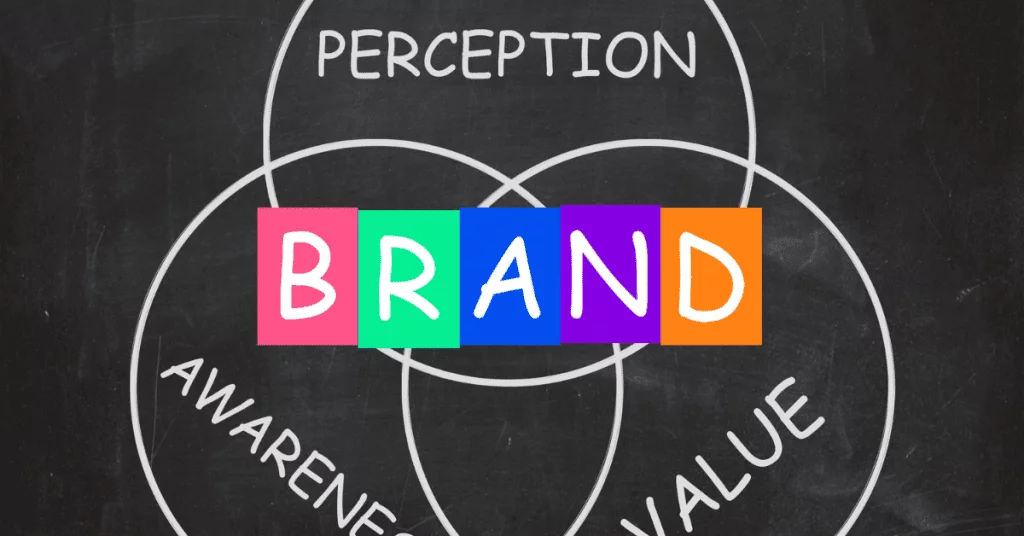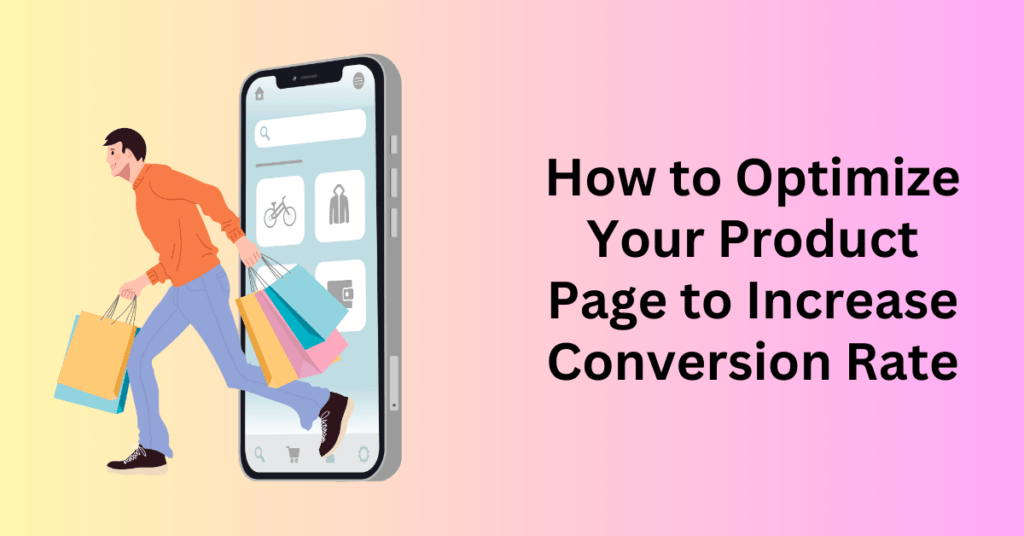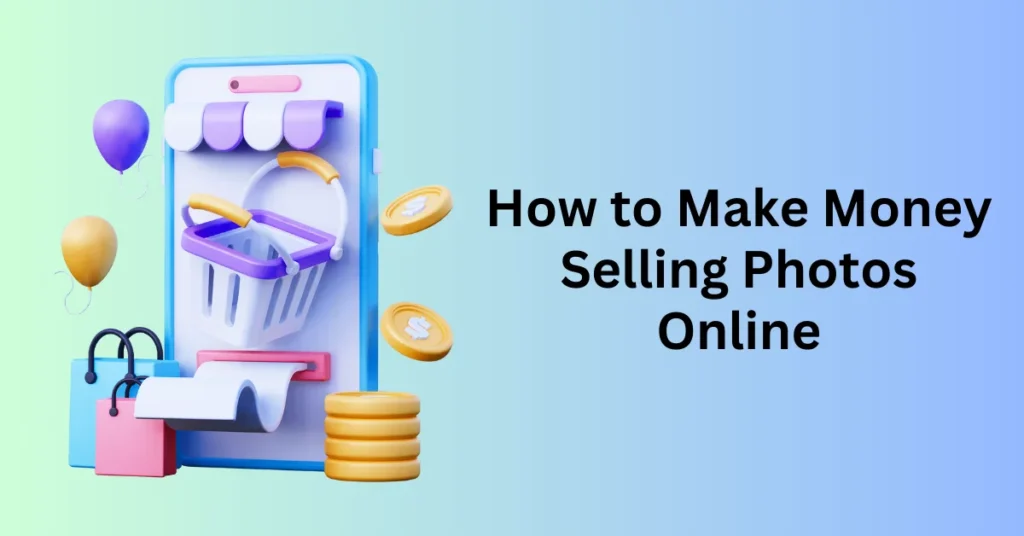The success of your online store hinges on your ability to entice visitors, keep them engaged, and convert them into loyal customers. While there are numerous strategies to achieve this, one of the most powerful tools is a well-optimized product page.
Product page optimization isn’t merely about adding attractive images and catchy descriptions. It’s a multi-faceted approach that combines elements of design, content, psychology, and user experience to create a persuasive and seamless shopping journey. In this blog, we’ll explore each of these facets on how to optimize your product page to increase conversion rate.
If you’re looking to boost your e-commerce sales, increase your conversion rates, and create an online shopping experience that leaves a lasting impression, you’re in the right place.
What is Product Page Optimization?
Product page optimization is the process of fine-tuning and enhancing the content, design, and functionality of a webpage that displays a specific product or service for sale. This optimization aims to create a compelling and user-friendly online shopping experience, with the ultimate goal of increasing conversions and driving sales. It involves various elements, including optimizing product descriptions, images, pricing information, and calls to action, as well as improving the overall layout and user interface.

Effective product page optimization considers both search engine optimization (SEO) principles to attract organic traffic and user experience (UX) design to engage and convert visitors into customers. By continuously refining and tailoring the product page to meet customer needs and preferences, businesses can boost their online sales and compete effectively in the e-commerce landscape.
Key aspects of product page optimization also encompass addressing issues related to load times, mobile responsiveness, and security. It involves A/B testing to determine which elements resonate best with the target audience and employing data-driven insights to make informed decisions.
Ultimately, product page optimization is an integral part of e-commerce strategies. It ensures that a company’s offerings are presented in an appealing and efficient manner, leading to improved customer satisfaction and revenue generation.
11 Elements of a Great Product Page
Every product page is different, with certain elements being more important depending on the industry, product, and customer need. A beauty brand, for example, will want to focus on transparent ingredient information and customer reviews, while an apparel company should invest in high-quality images and in-depth sizing and fit information.
That said, each of these elements is worth an inspection as you dive into product page optimization for your own site.
1. A clear call to action (CTA) – Product Page Optimization
Using a clear call to action (CTA) is essential in creating an effective and engaging product page. A well-placed and thoughtfully crafted CTA can be the driving force behind converting visitors into customers. Here’s how to effectively use a clear CTA on a great product page:
Placement and Visibility
The placement of your CTA is crucial. It should be prominently positioned on the page. It’s typically near the top where it’s immediately visible to visitors.
You can place the CTA above the fold, which means it’s visible without scrolling. Also, ensure that it stands out by using a contrasting colour or a visually appealing button design. Finally, make sure that it’s easily accessible on both desktop and mobile devices. There are more shoppers on their mobile compared to desktops nowadays. Hence, you will need to ensure your online store works well on mobile as well.
Action-Oriented Language
The language used in your CTA should be concise, action-oriented, and specific. Instead of generic phrases like “Click Here” or “Submit,” use words that directly convey what the user should do, such as “Add to Cart,” “Buy Now,” or “Get Started.”
You should always be clear about the outcome of the action, so visitors know what to expect. For instance, “Add to Cart” implies that the product will be placed in their shopping cart. Use persuasive words that create a sense of urgency or emphasize the benefit, like “Limited Time Offer” or “Save 50% Today.”
Testing and Optimization
Crafting the perfect CTA often requires testing and optimization. You can use A/B testing to experiment with different CTA designs, wording, and placements to determine what resonates best with your specific audience. Then, analyze the data to see which CTA variation results in higher conversion rates. You may find that subtle changes in the CTA’s colour or text can significantly impact your conversion rate.
Besides, reviewing and optimizing your CTAs regularly based on the data and user feedback ensures that your product page continually evolves to meet customer preferences and maximize conversions.
2. Compelling product and lifestyle photography
Compelling product and lifestyle photography plays a pivotal role in creating an enticing and effective product page that engages customers and drives sales. Here’s how to harness the power of photography to enhance your product pages:
High-Quality Imagery
Start by ensuring your product images are of the highest quality. High-resolution photos allow customers to zoom in and examine the product details closely. In addition, it gives them a better understanding of what they’re considering buying.
You can either use professional equipment or hire a skilled photographer to capture crisp, well-lit images that accurately represent the product. Strive for consistent lighting, accurate colours, and clear focus. This is because the quality of your images reflects your brand’s professionalism and attention to detail.
Showcase Multiple Angles and Details
To build trust and reduce uncertainty, showcase the product from various angles and perspectives. You can do this by including close-up shots of important features, textures, and any intricate elements.
Besides, you should also highlight any unique selling points or design nuances. Customers often want to see the product as if they were holding it in their hands. Hence, provide a 360-degree view, if possible.
Additionally, provide images that demonstrate the product in use, showing how it fits into a customer’s life. Lifestyle images help shoppers visualize themselves using the product, which can be a powerful motivator for making a purchase.
Consistency in Style and Branding
Maintain a consistent style and branding throughout your product photography. This includes using the same background, lighting, and overall aesthetic for all your product images.
Consistency in style not only reinforces your brand identity but also provides a cohesive and professional look to your product pages. If you have a diverse product range, ensure that your photography style adapts to each category while still maintaining an overarching brand coherence.
3. Images that link to product variants – Product Page Optimization
Incorporating images that link to product variants is a smart strategy for enhancing your product page and improving the customer’s shopping experience. This approach allows potential buyers to visualize and select different product options, such as colours, sizes, or styles, directly from the images. Here’s how to effectively implement this feature:
Interactive Visual Navigation
To create a seamless shopping experience, integrate interactive visual navigation within your product images. When a customer hovers over or clicks on a specific part of an image (e.g., a colour swatch or size option), the main product image should instantly update to display that variant.
This feature makes it easy for shoppers to explore different options and visualize how the product appears in their preferred choice. By reducing the number of clicks and page reloads, you simplify the decision-making process and improve user satisfaction.
Consistency and Clarity
Ensure that the images linking to product variants are clear, consistent, and well-labeled. Each image should accurately represent the variant it links to, whether it’s a different colour, size, or any other distinguishing feature.
Consistency in image quality and labelling helps customers make informed choices and builds trust in your product offerings. Make sure the images are of the same high quality as the primary product images and maintain a cohesive style to keep the page visually appealing.
Mobile-Friendly Design
Keep in mind that many shoppers use mobile devices for online shopping. Implement a mobile-friendly design that accommodates touchscreen interactions, such as swiping, tapping, and pinching to zoom.
Besides, you need to ensure that the variant-switching functionality is equally intuitive and user-friendly on both desktop and mobile devices. A responsive design that adjusts to various screen sizes and orientations ensures a consistent and positive shopping experience for all your customers.
4. Detailed Product Descriptions – Product Page Optimization
Detailed product descriptions are a cornerstone of a great product page. They provide essential information to potential customers, helping them to make informed purchasing decisions and build trust in your brand. Here’s how to effectively utilize detailed product descriptions:
Provide Comprehensive Information
A well-crafted product description should offer a comprehensive view of the product. Firstly, start with the basics, such as dimensions, materials, and key specifications. Then, include any unique features or benefits that set your product apart from competitors.
You should also consider addressing common questions that customers may have. This includes how to care for the product or whether it’s suitable for specific use cases. The more information you provide, the better-equipped customers are to understand what they’re buying and whether it meets their needs.
Emphasize Benefits, Not Just Features
While it’s essential to list product features, it’s equally important to explain how those features benefit the customer. You can paint a vivid picture of how the product can improve the customer’s life, solve a problem, or fulfil a desire.
Then, use persuasive and descriptive language to highlight the value proposition. For example, instead of merely stating that a backpack has padded straps, explain that the padded straps provide comfort during long hikes, reducing strain on the shoulders. By focusing on benefits, you connect with the customer on a more emotional level and make the product more appealing.
Use Engaging Language and Formatting:
The way you present your product description matters. Use clear and concise language, and break up the content into easily scannable sections, such as bullet points, headings, and paragraphs.
Also, highlight key information using bold or italics. In addition, you can utilize high-quality images to complement the text and provide visual context.
Finally, incorporate user-generated content, such as customer reviews and images, to offer authentic insights into the product. Make sure your product description is free from jargon and technical terms that may confuse potential buyers. A well-structured, engaging, and user-friendly product description enhances the readability and overall appeal of your product page.
5. Consistent Branding – Product Page Optimization
Consistent branding is a fundamental element of a great product page that helps establish your brand identity and build trust with customers. Here’s how to effectively incorporate consistent branding into your product page:
Maintain Visual Cohesion
You need to ensure that the visual elements on your product page, such as colours, fonts, and overall design, align with your brand’s established style guidelines. Consistency in visual branding not only reinforces your brand identity but also makes your product page instantly recognizable to previous customers.

Besides, it conveys professionalism and attention to detail, which can instil confidence in potential buyers. For instance, if your brand is known for its minimalist and elegant design, your product page should reflect this aesthetic throughout, from the product images to the CTA buttons.
Use Brand Language
The language and tone of your product page should be consistent with your brand’s voice. If your brand is known for being playful and informal, use a conversational and light-hearted tone in your product descriptions and other copy.
On the other hand, if your brand is more formal and professional, maintain a more serious and informative tone. Consistency in brand language ensures that your messaging resonates with your target audience and conveys a unified brand personality.
Brand Messaging and Values
Beyond the visual and verbal elements, your product page should also align with your brand’s values and messaging. If your brand is eco-conscious and emphasizes sustainability, make sure that your product descriptions and images highlight environmentally friendly features or practices.
If customer satisfaction and quality are core values, emphasize these aspects in your product descriptions. Consistent alignment with your brand’s values creates a narrative that connects with customers on a deeper level, fostering loyalty and trust.
6. Aspirational content – Product Page Optimization
Aspirational content is a powerful tool that can elevate your product page and create a strong emotional connection with potential customers. By showcasing how your product can fulfill customers’ desires, needs, and aspirations, you can effectively drive engagement and sales. Here’s how to use aspirational content on a great product page:
Highlight the Lifestyle
Aspirational content is all about illustrating the lifestyle and experiences associated with your product. You can show your customers how your product can enhance their lives and make them feel more fulfilled or empowered.
This can be done by using high-quality images and evocative descriptions to convey the emotions and benefits linked to your product. For example, if you’re selling outdoor gear, feature images of happy adventurers enjoying the great outdoors with your products. Describe how your hiking boots provide comfort and support for long treks, enabling customers to have unforgettable adventures.
This storytelling approach creates a powerful narrative that resonates with the audience and taps into their desires.
Appeal to Emotions
Aspirational content should connect with customers on an emotional level. You should craft product descriptions and copy that evoke emotions like excitement, happiness, or confidence.
Besides, describe how your product can help customers overcome challenges, achieve their goals, or fulfill their dreams. For instance, if you sell fitness equipment, emphasize how using your products can lead to a healthier and more vibrant life. Use testimonials and success stories from satisfied customers to add credibility and relatability to the aspirational content.
Create a Vision
Paint a vision of what life could be like with your product. You can show the transformation it can bring to your customers, whether it’s a more organized home, a more stylish wardrobe, or a more efficient work environment.
Then, use aspirational content to spark the imagination of your audience and make them visualize how your product fits into their ideal life. By doing so, you create a sense of desire and motivation, driving customers to take action and make a purchase.
7. Conversational copy that speaks to your target customer – Product Page Optimization
Conversational copy that speaks directly to your target customer is a crucial element of a great product page. It helps you engage with your audience on a personal level, address their specific needs and concerns, and ultimately guide them toward making a purchase. Here’s how to effectively use the conversational copy in your product pages:
Know Your Audience
Before crafting conversational copy, it’s essential to have a deep understanding of your target customer. Conduct thorough market research to identify their pain points, desires, and preferences.
Once you have a clear picture of your ideal customer, create a copy that directly addresses their needs and aspirations. Use language that they can relate to understand, and acknowledge their specific challenges and goals.
Engage in Dialogue
When writing conversational copy, imagine you’re having a one-on-one conversation with a customer. You can use the second person (“you”) to directly address the reader, creating a sense of personal connection. Then, ask questions that prompt them to think about how the product can benefit them.
Share anecdotes or stories that resonate with your audience and relate to their experiences. The goal is to make customers feel like you understand them and are genuinely interested in helping them find the right solution.
Highlight Benefits and Solutions
Instead of simply listing product features, focus on explaining how those features solve problems or fulfil the customer’s needs. Use conversational language to describe the benefits and the positive impact the product can have on the customer’s life.
Besides, you need to communicate how the product addresses their pain points and why it’s the best choice for them clearly. When you are engaging in a dialogue and highlighting solutions in your copy, it can build trust, persuade potential customers, and guide them toward taking action.
8. Social proof: Reviews, expert testimonials, and UGC
Leveraging social proof through reviews, expert testimonials, and user-generated content (UGC) is a highly effective strategy for enhancing a great product page. Social proof helps build trust and credibility with potential customers, influencing their purchase decisions. Here’s how to effectively incorporate social proof into your product page:
Customer Reviews
Displaying customer reviews prominently on your product page is one of the most influential forms of social proof. Positive reviews from satisfied customers reassure potential buyers about the quality and reliability of your product.
Hence, you need to encourage customers to leave detailed and authentic reviews and respond to both positive and negative feedback to demonstrate your commitment to customer satisfaction. You can then use star ratings, summaries, and even individual customer stories to provide a well-rounded view of the product’s performance.
Be transparent and honest about the feedback you showcase, as authenticity is a critical factor in building trust.
Expert Testimonials
Expert endorsements or testimonials from industry authorities, influencers, or relevant professionals can significantly impact customer perception. The testimonials lend credibility to your product, especially if they highlight unique features or benefits that set your product apart.
When incorporating expert endorsements, ensure that they are relevant to your product’s niche and that the expert has a reputation that aligns with your brand values. Expert opinions should not overshadow customer reviews but rather complement them to provide a well-rounded perspective.
User-Generated Content (UGC)
Encouraging customers to share their own images, videos, and stories related to your product is another effective way to build social proof. UGC not only showcases authentic experiences but also engages potential customers by allowing them to see how others are using and benefiting from the product.
You can implement features that enable customers to upload photos or videos of themselves using your product. Then, share these UGC elements on your product page to create a dynamic and interactive shopping experience. Finally, make it easy for customers to tag your brand or use specific hashtags when sharing their content on social media, allowing you to curate and feature the most compelling UGC on your product page.
9. Related and recommended products
Integrating related and recommended products into a great product page is an effective strategy to enhance the shopping experience, increase the average order value, and maximize cross-selling and upselling opportunities. Here’s how to use related and recommended products effectively:
Complementary Products
Related and recommended products should be carefully curated to complement the main product. These items should naturally pair with or enhance the featured product in a way that is meaningful to the customer. For example, if you’re selling a camera, related products could include lenses, tripods, or camera bags, while recommended products might include memory cards or photography tutorials.
By suggesting items that logically go together, you can help customers discover additional items they might need or want, ultimately increasing the value of their purchase. This is a very good way to increase the order value for every order.
Strategic Placement
The placement of related and recommended products on your product page is critical. Position them in a way that is unobtrusive yet easily discoverable.
One common approach is to place these recommendations below the primary product information but above the footer. You can also include them in the cart or during the checkout process. Using eye-catching visuals and brief, enticing descriptions is crucial to pique the customer’s interest.
By presenting these suggestions at the right time and in a user-friendly manner, you make it convenient for customers to explore additional options.
Personalization and Analytics
Implementing personalization algorithms and analytics can take your related and recommended product strategy to the next level. Analyze customer behaviour, purchase history, and browsing patterns to offer individualized suggestions.
Based on the data and customer feedback, continually refine your strategy to improve your conversion rate.
10. Buying and checkout options – Product Page Optimization
Optimizing buying and checkout options in a great product page is crucial for streamlining the purchasing process, reducing cart abandonment, and improving the overall user experience. Here’s how to effectively use buying and checkout options:
Clarity and Convenience
You need to make the buying process as simple as possible. This means to ensure that buying and checkout options are clear and easily accessible. Firstly, you should consider implementing a prominent “Add to Cart” or “Buy Now” button near the product description. This is so that customers can take action without scrolling.
Next, provide a visible and always-accessible shopping cart icon that lets users review and edit their selections at any point. You may also offer clear pricing information, including any discounts, shipping costs, and available payment methods. The more transparent and convenient the buying process, the more likely customers are to complete their purchases.
Multiple Payment and Shipping Options
Different customers might have different convenient ways to complete payment. Hence, you need to provide a variety of payment and shipping options to cater to different customer preferences.
For your online store, you can have the option to accept major credit cards, digital wallets, and other popular payment methods to accommodate a wide range of customers. Then, offer both standard and expedited shipping choices, along with options for tracking, insurance, and in-store pickup, if applicable. This will give customers the flexibility to choose what suits them best and make sure that shipping costs and delivery times are clearly communicated.
Guest Checkout and Account Creation
Offering a guest checkout option is essential to reduce friction for first-time customers. While encouraging customers to create an account can help with future marketing efforts and order tracking, it should be optional.
Implementing a mandatory account sign-up to check out, will make them feel troublesome and then, leave your store. Hence, allowing users to complete a purchase with minimal information. Something like shipping and billing details only can simplify the checkout process. You can always prompt them to create an account after they complete the purchase. Also, you can incentivize them with a voucher for account creation.
As for returning customers, you can provide a straightforward login or account retrieval process. Make sure to reassure customers about the security of their personal and payment information, and incorporate trust signals, such as secure payment icons and SSL certificates.
11. Trust signals – Product Page Optimization
Trust signals are essential for building confidence and credibility with potential customers, especially in the online shopping environment where trust is a critical factor in the decision-making process. Here’s how to effectively use trust signals on a great product page:
Secure Payment Icons
You can do this by displaying recognizable secure payment icons, such as those of major credit card companies or trusted payment processors like PayPal. These icons indicate that your payment methods are secure and reliable, assuring customers that their financial information is protected. You need to also make sure to place these icons close to the checkout area or near payment-related information to reinforce trust at the point of purchase.
SSL Certificates
Secure Socket Layer (SSL) certificates are a must-have for e-commerce websites. They encrypt data transmitted between the customer’s browser and your website. It will safeguard sensitive information like credit card details.
You must ensure that your product page prominently displays the SSL certificate. It’s often indicated by a padlock symbol in the browser’s address bar, to give customers peace of mind that their personal data is secure.
Transparent Policies
You need to provide easily accessible and transparent policies on your product page. This includes clear return and refund policies, shipping and delivery information, and privacy policies. Your customers should be able to find and understand these policies without having to search extensively.
In addition, reinforce your commitment to customer satisfaction by highlighting any money-back guarantees or hassle-free returns. Address common questions and concerns proactively in these policies to instill trust in your brand.
What to Avoid in Product Page Optimization
Product page optimization is crucial for e-commerce success, but it’s equally important to know what to avoid in this process to prevent common pitfalls that could hinder your efforts. Here are several key things to avoid in product page optimization:
Complex and Confusing Navigation
Avoid overwhelming visitors with too many options, buttons, or navigation elements on a single product page. A cluttered interface can confuse customers and distract them from the main goal: making a purchase.
You need to streamline the page, removing unnecessary elements and focusing on guiding users toward the call to action (CTA). In short, keep the design clean, intuitive, and easy to navigate.
Insufficient Product Information
One of the biggest mistakes is not providing enough product information. You need to at all cost avoid vague or incomplete descriptions, as these can leave customers uncertain about the product’s features, benefits, or limitations.
You should always include essential details like product dimensions, materials, care instructions, and specifications. Additionally, neglecting to address common customer questions can lead to frustration and lost sales. Thorough, clear, and informative product descriptions are essential.
Inadequate Visual Content
Visual content, including product images and videos, is a vital part of the shopping experience. Avoid using low-quality or insufficient images that don’t accurately represent the product.
You need to use high-resolution images from multiple angles, and if applicable, include lifestyle photos or videos that demonstrate the product in use. Besides, neglecting visual content can lead to a lack of trust and credibility, as customers may question the product’s authenticity and quality.
Ignoring Mobile Optimization
With the increasing number of mobile shoppers, ignoring mobile optimization is a significant mistake. A product page that is not mobile-friendly in terms of design, load times, and usability can drive potential customers away.
You need to ensure that your product pages are responsive and adapt to different screen sizes, with a user-friendly layout and fast-loading images. Finally, test the mobile experience thoroughly to avoid frustrating users and losing sales.
Excessive Pop-Ups and Distractions
Pop-ups, ads, and other distractions that interrupt the shopping experience can be annoying and counterproductive. You should avoid bombarding visitors with pop-up requests for email subscriptions or upsell offers as soon as they land on a product page.
If you do use pop-ups, ensure they are well-timed and provide value to the customer, rather than interrupting their browsing flow.
Lack of Trust Signals
Trust signals, like secure payment icons, SSL certificates, and customer reviews, are essential for building credibility. Avoid having a product page without these elements, as they reassure customers about the safety of their transactions and the reliability of your products and services. Neglecting to incorporate trust signals can lead to increased cart abandonment rates and decreased conversions.
Optimizing product pages to reach your goals
The path to increased conversion rates of your online store is well within your reach, and the secret lies in the power of optimizing your product pages.
By implementing the strategies we’ve shared, you’re well on your way to creating a seamless shopping experience that captivates your audience and maximizes conversions.
So, go ahead and apply these insights to your product pages, experiment with A/B testing, and keep a close eye on analytics to continually refine your approach. E-commerce is a dynamic field, and the journey toward conversion rate optimization is ongoing.


